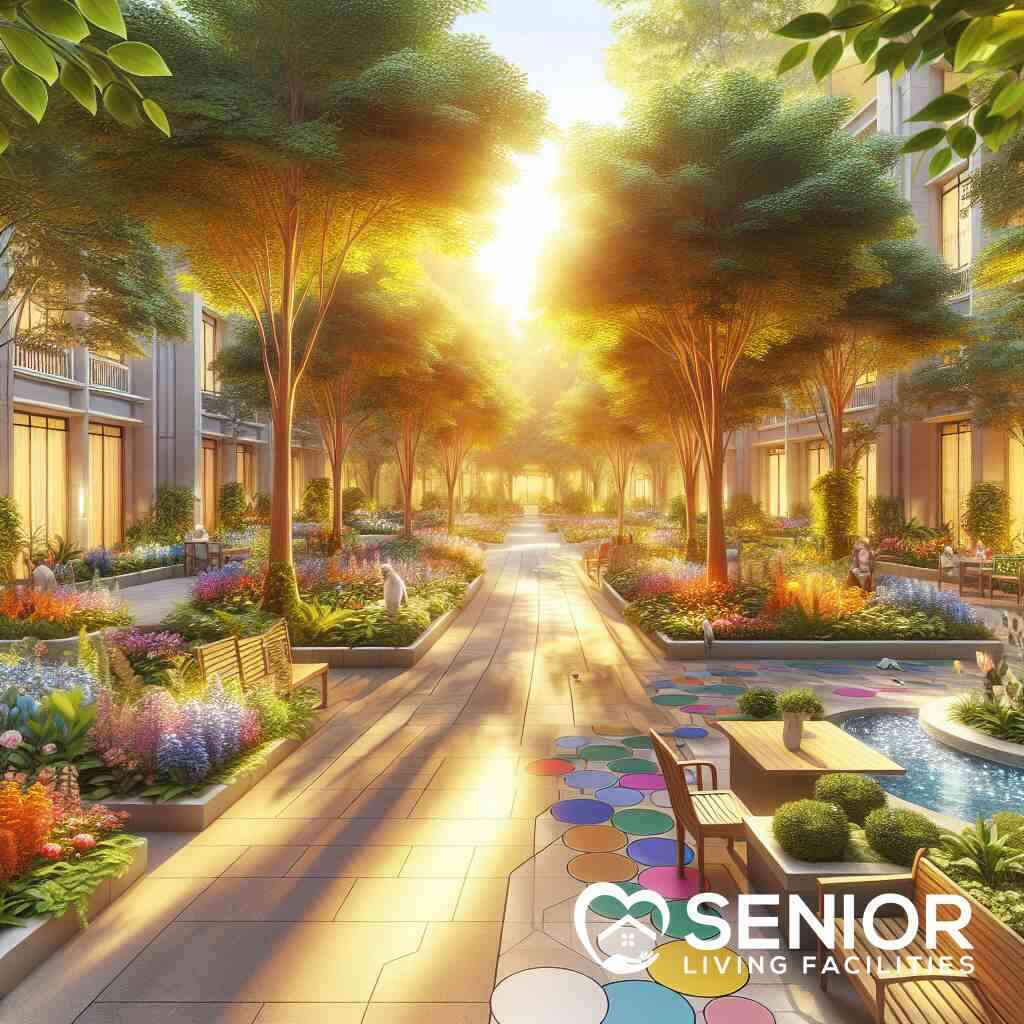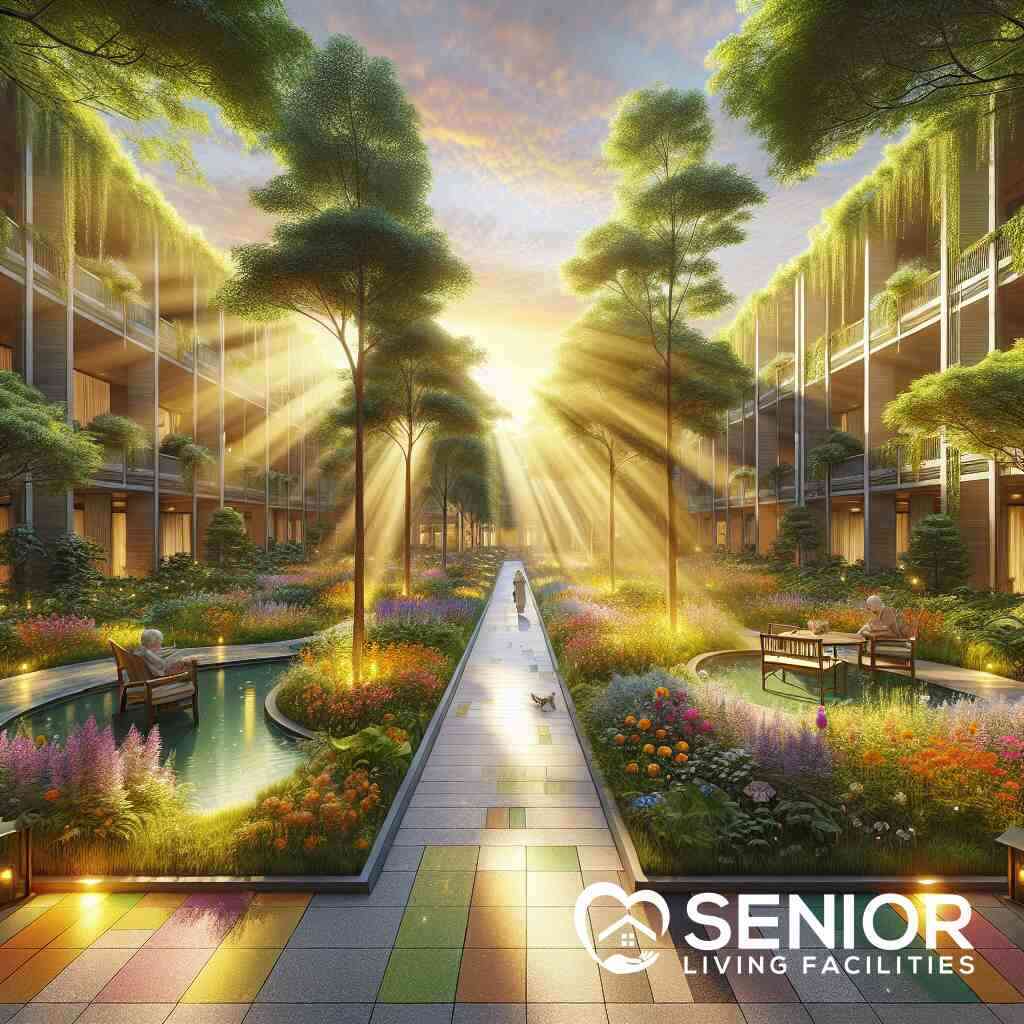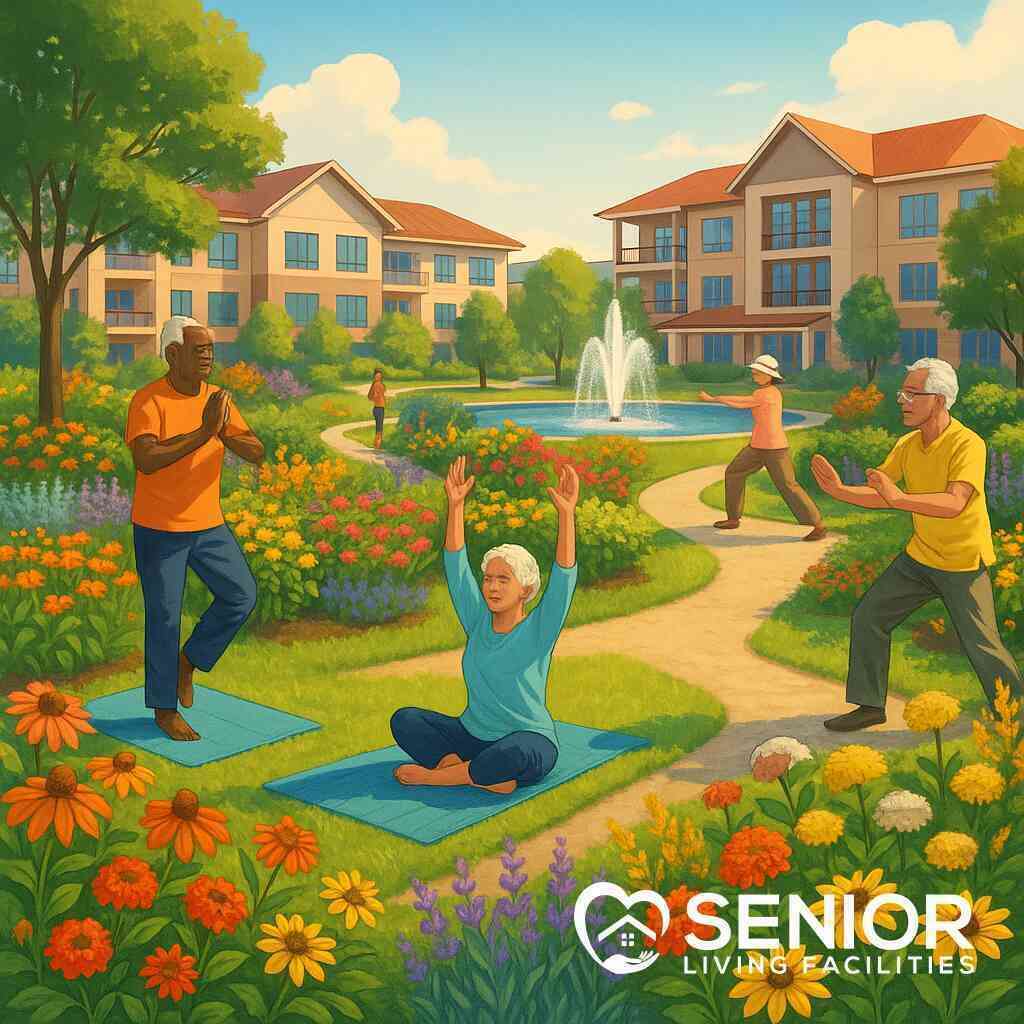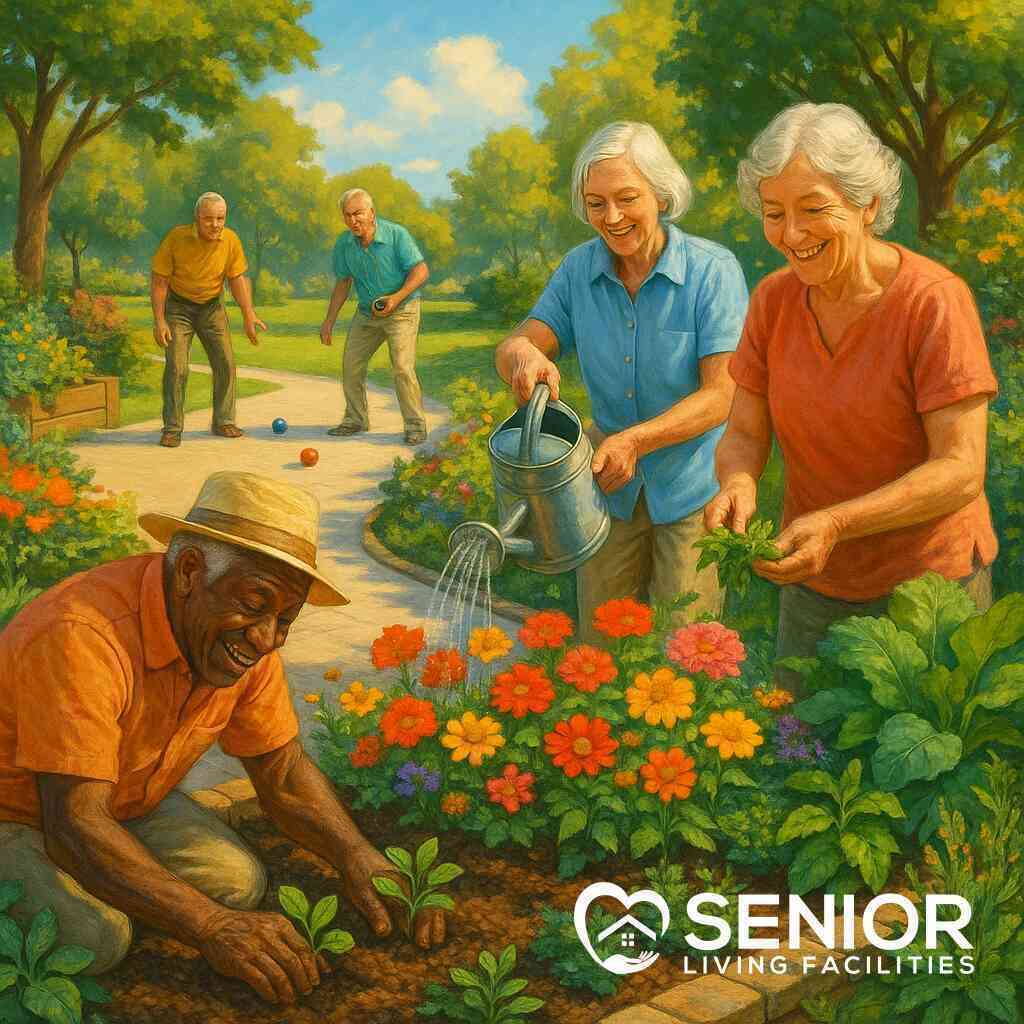
Unlocking Navigational Secrets in Senior Living Facilities
July 10, 2025
Introduction: Embarking on Navigational Journeys in Senior Living
Understanding the Importance of Navigation in Senior Living Environments
Navigating senior living environments effectively is fundamental for ensuring the safety and comfort of residents. Well-designed navigation systems are crucial not only for the elderly’s spatial awareness but also for their daily independence. The implementation of such systems helps residents maintain their dignity and autonomy, reducing reliance on caregivers for basic movement within a community. As senior living facilities adapt to accommodate the evolving needs of seniors, a focus on intuitive pathways and clear signage becomes essential. This thoughtful approach not only optimizes movement but also enhances the overall living experience within these communities.
Exploring the Connection Between Navigation and Quality of Life for Seniors
The connection between effective navigation and quality of life for seniors is profound. A well-structured senior living facility with clear directions significantly impacts residents’ mental and emotional well-being. When seniors can confidently navigate their surroundings, it fosters a sense of empowerment and reduces anxiety associated with getting lost. Additionally, facilities that integrate navigation aids often see increased engagement in community activities, as residents feel more comfortable venturing out. This higher level of participation leads to a more active, fulfilling lifestyle, contributing positively to their physical health and social bonds.
The Challenge of Adapting Environments for Diverse Senior Needs
Adapting environments to meet the diverse needs of seniors presents a unique set of challenges. Each resident has individual requirements based on their mobility, cognitive abilities, and personal preferences. This diversity necessitates a flexible approach to facility design and layout. Facilities must balance creating a structure that is both universally navigable and tailored to accommodate those with specialized needs, such as memory support. Moreover, these challenges are further compounded when considering senior living facilities in California, where the population diversity demands a wide range of solutions. Ultimately, meeting this challenge is key to providing exceptional care and enhancing the quality of life for every senior resident.
Designing Age-Friendly Spaces: Pioneering Seamless Navigation
Architectural Innovations in Senior Living Floor Plans
In the realm of senior living facilities, architectural innovations play a pivotal role in enhancing residents’ day-to-day experiences. These innovations involve designing spaces that promote ease of movement while ensuring comfort and functionality. For instance, open floor plans with minimal obstructions are essential for reducing the risk of falls, a common concern in senior communities. By employing strategic layout designs, facilities can enhance the overall flow of movement, thus making it easier for residents to navigate their surroundings independently. Additionally, incorporating natural light and accessible outdoor spaces fosters a sense of openness and connection to the environment. Innovations in design are crucial not only for physical movement but also for creating senior-friendly spaces that prioritize comfort and independence.
Incorporating Wayfinding Systems for Enhanced Orientation
Wayfinding systems are an integral aspect of modern senior living facilities, aimed at enhancing orientation and reducing confusion among residents. These systems encompass a variety of elements, including clear signage, distinct color coding, and intuitive pathways. A well-designed wayfinding system empowers seniors with a sense of independence, allowing them to confidently explore their surroundings without the need for constant assistance. Moreover, digital wayfinding aids and interactive maps can further augment traditional systems, providing comprehensive navigation solutions tailored to individual needs. Facilities must prioritize these elements to ensure a seamless experience, thus contributing to the overall quality of life and safety within senior communities.
Strategizing Senior Accessibility Features for Mobility
Accessibility is a cornerstone of effective senior living facility design. Implementing features that enhance mobility is crucial for enabling residents to move freely and safely. Such features may include ramps, handrails, and elevators that accommodate wheelchairs and other mobility aids. Additionally, ensuring that flooring materials are non-slip and accommodating to various types of mobility equipment is essential for preventing accidents. Facilities must adopt a holistic approach to accessibility, considering both current and future mobility needs of residents. This strategic planning not only enhances everyday living but also fosters a sense of independence and dignity among seniors. To learn more about how senior living facilities enhance mobility, you can explore senior accessibility and mobility.
Designing with Sensory-Friendly Considerations in Mind
Designing sensory-friendly spaces is becoming increasingly important as facilities strive to accommodate the diverse needs of their residents. Sensory-friendly environments help in reducing overstimulation, which can be particularly beneficial for seniors with cognitive impairments such as dementia. Incorporating elements such as muted color schemes, soft lighting, and acoustic treatments can significantly improve the living experience. Additionally, creating quiet zones and sensory gardens offers residents an opportunity to relax and unwind in a calming environment. These thoughtful design considerations not only enhance comfort but also promote mental health and well-being. In high-density areas like New York, designing sensory-friendly spaces is particularly crucial, ensuring that urban living does not compromise the quality of life for seniors.

Technological Advancements: Empowering Senior Navigation
Integrating Mobility Aids for Simplifying Senior Transitions
Mobility aids are pivotal in optimizing mobility in assisted living environments, offering seniors the confidence and security necessary during transitions. Devices such as walkers, canes, and motorized scooters are essential tools that minimize risks and simplify daily movements. In parallel, advanced mobility solutions are becoming commonplace within senior living facilities, designed specifically to meet unique resident requirements while fostering independence. These aids are not only practical but also represent an integration of technology with assistive devices, creating seamless senior transitions. Additionally, innovative wheelchairs and stairlifts are integral in designing elder-friendly navigation experiences facilitating movement in retirement communities.
Harnessing Senior Navigation Technology for Better Facility Orientation
The utilization of senior navigation technology within facilities has transformed how residents engage with their environments. Digital maps and mobile applications are tailored to enhance facility orientation for seniors, effectively countering navigation challenges in senior living. These technologies offer turn-by-turn guidance and personalized itineraries that accommodate the user’s needs and preferences. Moreover, GPS-enabled devices are increasingly popular, allowing real-time tracking and location-based reminders. Such integration ensures that seniors can move about freely and with greater confidence. Facilities that embrace senior living innovation and technology cultivate a community that empowers residents to maintain autonomy and engage more actively in their surroundings. How Senior Living Facilities Transform Care Now
Personalized Senior Navigation: Leveraging Memory Support Features
Personalization is key when leveraging memory support features in senior facilities. Advanced navigation systems are designed to remember residents’ usual paths and predict their next destinations, providing tailored support. Interactive kiosks equipped with facial recognition can greet residents and offer customized directions based on individual routines. These solutions significantly reduce confusion and anxiety, fostering a sense of belonging within the community. For seniors with cognitive impairments, memory aids integrated within the facility’s infrastructure are essential for enhancing daily navigation and ensuring a safer living environment. Thus, technological empowerment in senior living becomes a cornerstone for personalized care and enrichment.
The Role of Smart Devices in Facilitating Independence
Smart devices are revolutionizing senior living by providing tools that support independence and self-sufficiency. Voice-activated assistants enable seniors to control their environment with ease, initiating lights, appliances, and climate control with verbal commands. Furthermore, wearable technology offers health monitoring solutions, reporting vital statistics directly to healthcare providers to ensure responsiveness and timely interventions. As part of creating familiar environments for seniors, smart devices also play a crucial role in ensuring that residents can effortlessly navigate their day-to-day tasks. Implementing these technologies within senior facilities is about transforming spaces into supportive ecosystems that promote elder independence and well-being.
Creating Community: Fostering Engagement and Familiarity
Facilitating Social Connections Through Seamless Design
The design of senior living facilities plays a crucial role in facilitating social connections among residents. Seamless design involves creating communal spaces that encourage interaction and foster a sense of belonging. Layouts that prioritize open areas such as lounges, dining spaces, and activity rooms promote spontaneous interactions, allowing seniors to form friendships naturally. Moreover, strategically placing seating arrangements in these areas enhances comfort and accessibility, making it easier for residents to engage in conversations or participate in group activities. By focusing on community-centric architecture, senior living facilities can create environments that are conducive to socialization and connectivity.
Developing Familiar Environments with Spatial Awareness for Elders
To cultivate a sense of familiarity, senior living facilities must incorporate elements that enhance spatial awareness for elders. This involves designing spaces that are easy to navigate, with clear visual cues such as color-coded pathways and distinct landmarks. Such features help residents orient themselves, reducing confusion and stress. Additionally, consistency in design across various sections of a facility ensures that residents feel at ease when transitioning between different areas. By understanding the dynamics of architectural innovations in senior homes, facilities can better cater to the cognitive and emotional needs of older adults, creating comforting environments that support day-to-day living.
Promoting Senior Engagement Strategies for Active Participation
Promoting strategies that enhance senior engagement is vital for fostering an active and fulfilling lifestyle within senior living communities. Facilities can implement diverse programs that cater to a wide range of interests, from arts and crafts to exercise classes and educational workshops. Encouraging seniors to participate in these activities not only boosts physical health but also enriches mental well-being by keeping the mind engaged and active. Additionally, involving residents in decision-making processes regarding events and activities can empower them, allowing them to feel a sense of ownership and responsibility within their community. By adopting inclusive engagement strategies, facilities can create vibrant, dynamic environments where each individual feels valued and involved.
Implementing Intuitive Design to Enhance Elder-Friendly Navigation
Intuitive design is paramount in creating elder-friendly navigation in senior living facilities. Designs that incorporate simple and clear instructions, alongside user-friendly pathways, significantly improve residents’ ability to move independently. Such designs often include sensors and automated lighting that guide paths during darker hours, ensuring safety and convenience. Furthermore, by employing materials and textures that are easy to differentiate, facilities ensure that visually impaired residents can navigate effectively. Understanding the importance of designing elder-friendly navigation enhances the overall usability of spaces, allowing residents to explore and interact with their surroundings confidently and independently.

Conclusion: Unlocking New Potential for Seniors Through Thoughtful Navigation
Reflecting on the Journey Toward Better Navigational Solutions
As we reflect on the journey toward better navigational solutions within senior living facilities, it is evident that much progress has been made. From architectural innovations to the integration of advanced wayfinding systems, the focus has been on enhancing the quality of life for seniors. Understanding the challenges of senior facility layouts has been pivotal in addressing spatial dynamics that cater to diverse needs. Thoughtful design considers every detail, ensuring that facilities truly become havens of safety and comfort. As these innovations come to fruition, they promise to transform the everyday experiences of seniors, fostering environments that are navigable and enriching.
Imagining Future Trends in Senior Living Facility Layouts
Looking forward, the vision for future trends in senior living facility layouts is inspiring. We anticipate further advancements in ergonomic design, emphasizing accessibility and comfort. In states like Colorado, these trends are set to burgeon, allowing us to imagine future trends in Colorado. Innovations will likely focus on customization, with layouts that incorporate personalized elements, catering to individual preferences and mobility requirements. The integration of green spaces and community-oriented areas will enhance communal living, creating vibrant and interactive social settings. These progressive designs will not only pave the way for more sustainable living but will also prioritize residents’ well-being and autonomy.
Embracing Holistic Approaches for Enhanced Elder Independence
Embracing holistic approaches in senior living facilities is key to cultivating enhanced elder independence. By integrating various aspects of design, technology, and community engagement, facilities can create comprehensive support systems for residents. This involves innovative mobility aids and smart devices that offer day-to-day assistance, reinforcing a sense of autonomy. Furthermore, understanding the importance of fostering communal bonds is critical, as seen in Florida, where Florida’s senior care and engagement highlights the impact of community involvement on resident satisfaction. The holistic approach facilitates an enriching lifestyle where seniors can thrive, maintaining their dignity and active participation in life.
Frequently Asked Questions
Question: How does Senior Living Facilities integrate wayfinding systems to optimize navigation for seniors in their communities?
Answer: At Senior Living Facilities, we understand the importance of wayfinding systems in enhancing senior navigation. Our communities incorporate comprehensive navigation systems that include clear signage, color-coded pathways, and intuitive layout designs. These systems not only improve spatial awareness for elders but also ensure residents can move about with ease and independence. We also explore advanced technological solutions like digital maps and interactive kiosks to further simplify navigation challenges in senior living environments.
Question: What strategies does Senior Living Facilities employ to meet the diverse navigation needs of seniors with cognitive impairments?
Answer: We recognize that meeting the diverse needs of seniors requires a personalized approach, especially for those with cognitive impairments. Our facilities integrate memory support features into the infrastructure, such as interactive kiosks with facial recognition and personalized navigation cues that remember residents’ usual paths. These features significantly enhance day-to-day navigation, minimizing confusion and fostering a sense of belonging and safety within the senior community.
Question: Can you explain how the design of spaces within Senior Living Facilities fosters social connections among residents?
Answer: Senior Living Facilities place a strong emphasis on creating age-friendly design that promotes social connections. We design communal spaces that encourage interaction, such as open lounges, dining areas, and activity rooms. By strategically placing seating arrangements and providing accessible paths, we foster spontaneous interactions and social engagement. This community-centric approach ensures that residents feel included and connected, enhancing their overall quality of life and mental well-being.
Question: In the blog ‘Unlocking Navigational Secrets in Senior Living Facilities’, how does your company ensure the integration of mobility aids supports elder independence?
Answer: As outlined in our blog, Senior Living Facilities prioritize elder-friendly navigation and mobility in senior homes by integrating a range of mobility aids. From walkers and canes to advanced motorized scooters and wheelchairs, we provide residents with tools to enhance their independence. Our facilities are designed with non-slip flooring, ramps, handrails, and elevators to accommodate these aids seamlessly, ensuring that every resident can navigate safely and confidently within the community.
Question: How do Senior Living Facilities address sensory-friendly design considerations to improve the living experience for seniors?
Answer: Sensory-friendly design is a pivotal part of our commitment to creating comfortable and supportive environments for seniors. We incorporate muted color schemes, soft lighting, acoustic treatments, and quiet zones to minimize overstimulation, particularly for residents with cognitive impairments like dementia. Moreover, sensory gardens and tailored spaces offer opportunities for relaxation and mental well-being, ensuring that sensory-friendly spaces are an integral aspect of our senior living facility designs.


